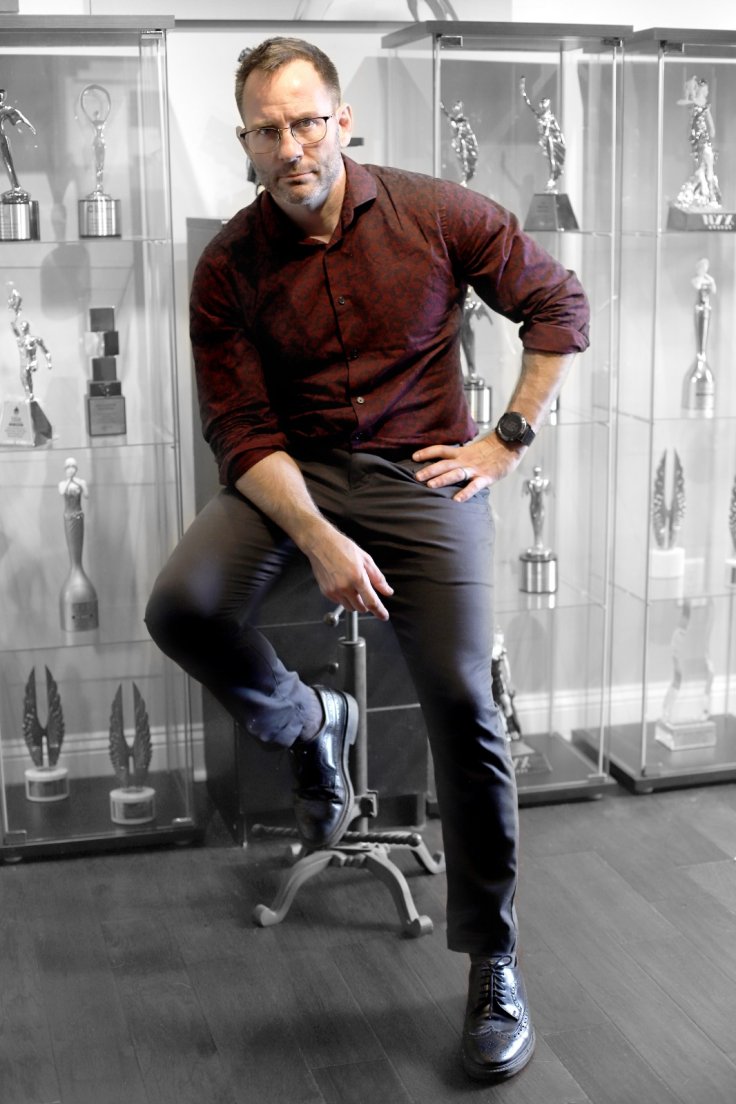
If you look at Microverse Studios now, it's hard to believe that they've ever hit speed bumps in their nearly twenty-year history. Their testimonials are borderline love letters, their client list is full of stars, and their list of awards is too long to read. However, according to CEO and Creative Director Cameron Slayden, there have been plenty, and some of them brought the company to the brink. After a few lessons from the School of Hard Knocks, Slayden has picked up a mindset that he believes not only helps his company get through tough times but makes it thrive in spite of them.
Lesson 1: Always maintain cash reserves to weather unexpected downturns.
After a few years of building the business and carving out a niche producing high-end scientific animation for the biotech and pharmaceutical industries, the first unexpected trouble was the financial crash of 2008.
"I watched the banks fail and the housing market buckle, and we were still getting work. For a whole year, more and more work kept pouring in, so I figured that it wouldn't touch our industry."
Anyone who remembers that time knows that the crash and ensuing recession eventually affected every business everywhere, and many went under as a result. Microverse Studios powered through, however.
"It didn't reach us until the next year, but then things became bleak. We had to tighten our belts a lot and there was a little while when it looked pretty grim, but we serve the biotech and pharmaceutical industries with mission-critical communication tools. Our industry wasn't going to go anywhere, even if they did have a spending freeze. After that, my philosophy became to always maintain enough of a war chest to cover temporary shifts in spending within our client industries."
Lesson 2: Pay close attention to your Key Performance Indicators (KPIs) for your marketing efforts so that you can nip sales problems in the bud.
The next big surprise came when Microverse Studios' marketing method became obsolete. For years, plenty of new work always came in through a combination of email marketing and SEO. After a rebrand, years of built up site authority and SEO evaporated, and that revealed that the email marketing had also stopped working altogether.
"It was a shock, to be sure. We're a small company and we don't have a person dedicated to marketing. We never needed one, because our clients sought us out and the simple email campaigns we ran worked. We have a product that's highly valuable to our clients at a competitive price point, so the only barrier to doing business was our clients not knowing that we existed."
It turned out that email categorization algorithms had begun shunting all of Microverse Studios' emails into promotional or spam categories that weren't monitored by users. That, combined with the loss of search engine ranking, made the visibility barrier all but insurmountable.
"The worst thing was, we didn't discover the problem until it had been going on for almost a year. I noticed that all of our projects were with repeat clients, and our bank account was getting low, and only then did I look at the actual data to identify the problem. If I'd been watching these metrics all along, we would have caught it much earlier and it wouldn't have been such a close call."
Lesson 3: Understand what drives your client's need for your product, and where you fit into their own growth cycle. Learn how to reach the perfect person at the perfect moment with the perfect pitch.
Slayden recalls, "The solution became clear: when we could no longer rely on email or clients finding us on their own, I had to go out and get us in front of them directly. That meant I had to learn everything about the people that made the decision to use us. I had to learn job titles, what companies would likely use us, and when in their life cycles we were most important. Then I had to go and find resources that would list out these companies and decision makers and reach out directly to them. This was all of course before we hired any sales and marketing people."
The process was time-consuming and required deep analysis and a lot of networking, but it quickly began to work. Within a few months, Slayden was regularly having conversations with the people that mattered most at exactly the right point in their company's development. This led to a new and rapidly growing customer base that drove Microverse Studios' expansion.
Lesson 4: Adopt the perspective that setbacks are opportunities to learn and improve.
On the other side of these major catastrophes that have driven other companies out of business, Slayden is upbeat.
"They were all hard at the time, but every single event left us stronger and better able to continue to grow and improve. I've come to value crises as crucibles of refinement. I've come to trust myself to figure out what's wrong and to let difficulty drive motivation rather than despair. I think the best part of all this is that now when there's trouble, I'm not scared of the future. I'm looking forward to it."








